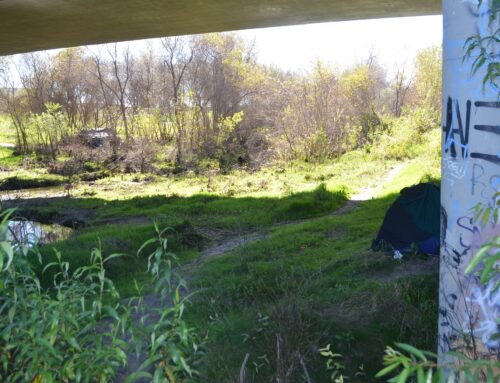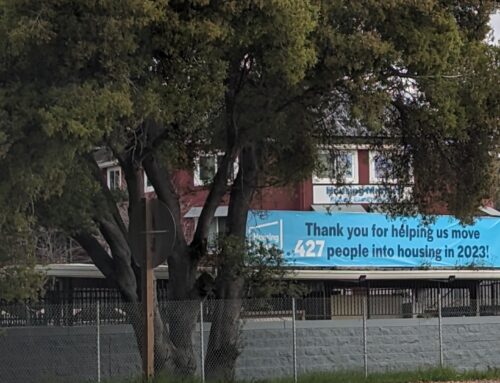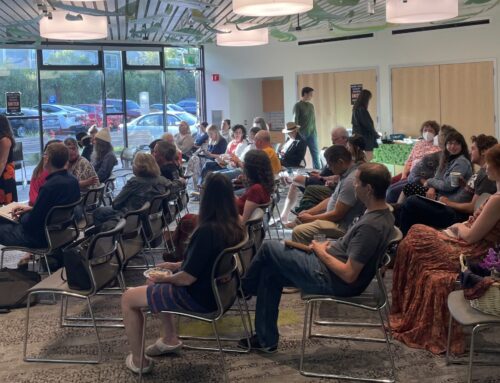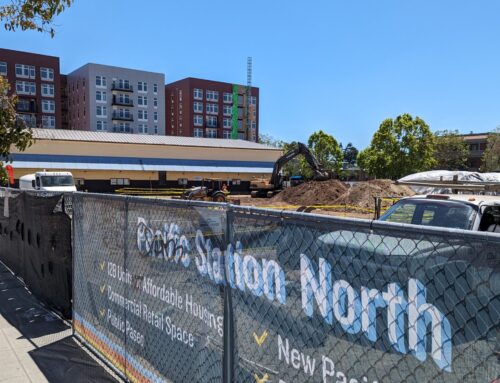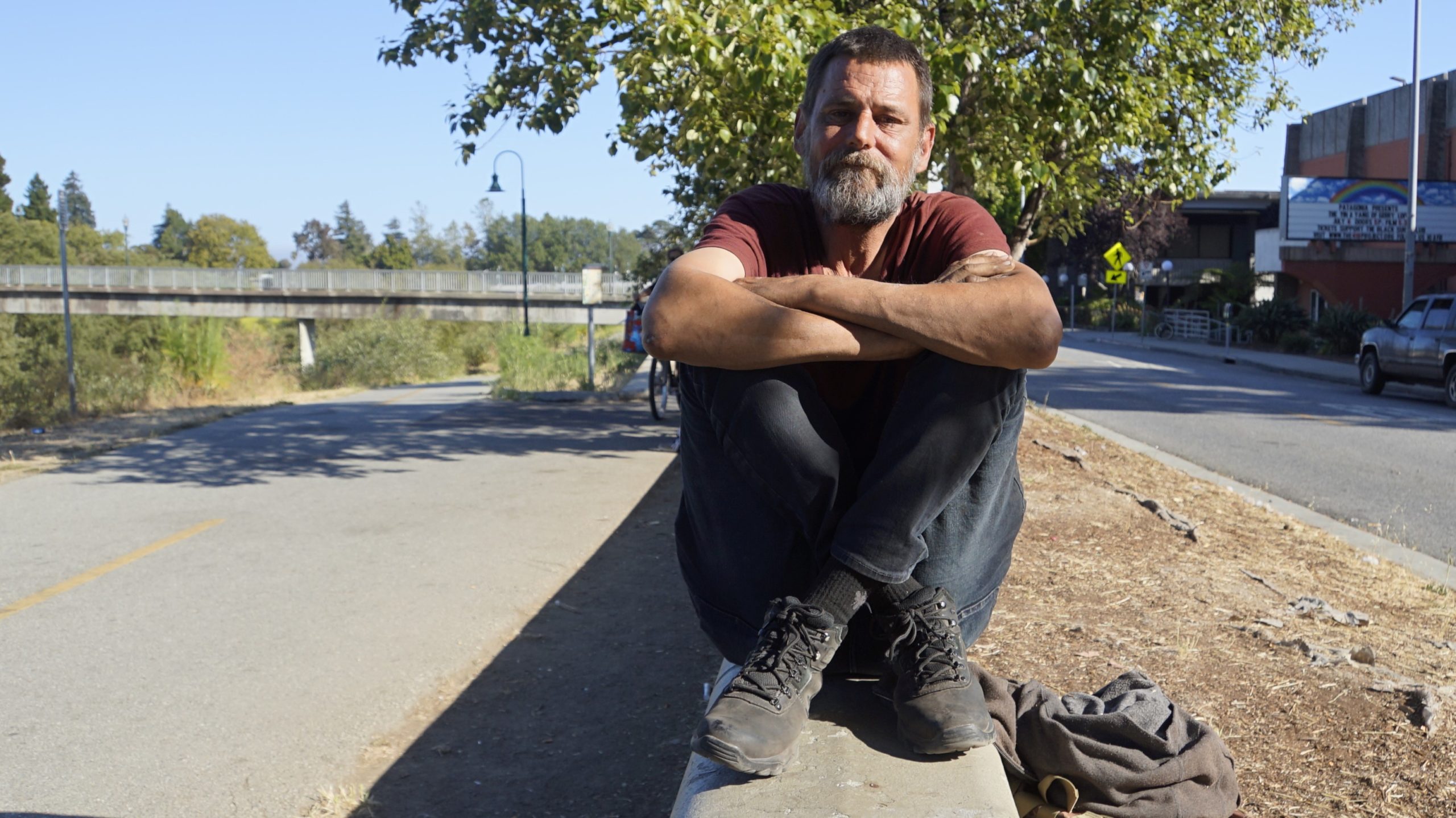
Thomas Paul says he needs permanent housing more than he needs a temporary managed camp. Paul has been part of the Downtown Streets Team and cleaned streets in Downtown Santa Cruz. (Kara Meyberg Guzman — Santa Cruz Local file)
Editor’s note: This is the first story in a three-part series on homeless services spending in Santa Cruz County. Read part two, part three and how this series was made.
SANTA CRUZ >> Tens of millions of state, federal and local government dollars fueled homeless services in Santa Cruz County from 2019 to 2021, but the story of how that money was spent and its outcomes has been a challenge to tell — even for the people closest to the money.
Santa Cruz Local investigated how local governments spent more than $126 million of public money for homeless services in those years.
Although Santa Cruz County leaders have to account for every dollar spent on homeless services in the county budget and report on spending from state grants, there still is not a clear way for residents to understand how money is spent on homeless services and the outcomes.
Santa Cruz Local’s charts below categorize homeless services spending. Public spending data on homeless services in the county has never been presented in this way.
How the charts were made
To follow the money, Santa Cruz Local made public records requests about homeless services spending from 2019 to 2021 in Santa Cruz County and in the cities of Santa Cruz, Watsonville, Capitola and Scotts Valley.
After reporters received dozens of grant reports and many other documents, reporters followed up for months with interviews, emails and more records requests to track when grant money was received and spent, and how it was used. With that information, Santa Cruz Local formed 14 categories of homeless services spending and created six interactive charts that explain how money was spent in fiscal year 2019-2020 and fiscal year 2020-2021. For local governments, fiscal years start July 1 and end June 30.
Touch this Santa Cruz Local chart to learn how more than $126 million of local, state and federal government money was spent on homelessness in Santa Cruz County from 2019 to 2021. Read more about category definitions, data limitations and money sources. (Kaitlyn Bartley — Santa Cruz Local)
Touch this Santa Cruz Local chart shows to learn how more than $31.3 million of local, state and federal government money were spent on homelessness in Santa Cruz County in fiscal year 2019-2020. Read more about category definitions, data limitations and money sources.(Kaitlyn Bartley — Santa Cruz Local)
Touch this Santa Cruz Local chart to learn how more than $95.5 million of local, state and federal government money was spent on homelessness in Santa Cruz County in fiscal year 2020-2021. Read more about category definitions, data limitations and money sources. (Kaitlyn Bartley — Santa Cruz Local)
Some key findings:
- At least $51.8 million was spent on temporary shelters in the two fiscal years, making it the highest spending category.
- At least $36 million was spent on rental assistance in the two fiscal years, making it the second highest spending category.
- Millions of government dollars went to Santa Cruz County nonprofit groups to operate temporary shelters, work with youths and provide other services to the unhoused.
Nicole Coburn, Santa Cruz County’s assistant county administrative officer, said the charts give “a snapshot of how money was being spent at a certain time to address homelessness.” Coburn said, “Why it was being spent that way depends on a number of factors, including the availability of different types of funding, so context is always important when we’re looking back at how we were allocating resources.”
The backdrop of 2020 and 2021 was the COVID-19 pandemic. More money was available from the state for homeless services to try to prevent the spread of COVID. More than three times more money was spent on homeless services in fiscal year 2020-2021 compared with the prior year, according to dozens of grants and other data compiled by Santa Cruz Local.
The charts include government contracts to nonprofit groups in Santa Cruz County for homeless services.
The blue, donut-shaped charts above include money spent by the Housing Authority of the County of Santa Cruz on housing vouchers for unhoused people. The housing authority is in charge of Housing Choice vouchers — formerly known as Section 8 vouchers — as well as other rent subsidies and services.
The red bar charts that describe spending in the County of Santa Cruz and the cities of Santa Cruz and Watsonville do not include housing authority money.
Touch this Santa Cruz Local chart to learn how public money was spent by the County of Santa Cruz and the county’s Continuum of Care in fiscal years 2019-20 and 2020-21. Money spent by the Housing Authority of Santa Cruz County, the City of Santa Cruz and the City of Watsonville is not included in this chart. Read more about category definitions, data limitations and money sources. (Kaitlyn Bartley — Santa Cruz Local)
There are several limitations of the data in the charts:
- All the figures noted are at least what was spent in each category, based on the grant documents, interviews and Santa Cruz Local research. The charts only include public money. Many homeless services are performed by nonprofit groups that have other sources of money, including private donors, foundations and corporate grants. The charts do not include all state and federal money that went directly to nonprofit groups.
- County of Santa Cruz spending on mental health services is not included in these charts because the county does not separate mental health services for housed and unhoused residents. About $80.7 million was spent on behavioral health in the county in fiscal year 2019-2020 and $79.2 million was spent in fiscal year 2020-2021, according to county budgets.
- Grant periods sometimes span more than one fiscal year or a portion of a fiscal year. Some spending estimates were made for each fiscal year based on the total amounts awarded and spent.
- The cost of city staff on homeless related work such as camp cleanup and police response to homeless-related calls was not included because staff would have been paid for their time regardless of their duties.
- Grant money from the U.S. Housing and Urban Development was not included for Walnut Avenue Family and Women’s Center, Salvation Army and Community Technology Alliance because those groups did not respond to several attempts to verify their spending. Community Action Board also did not respond to some requests for information about money related to the Homeless Emergency Aid Program and California Emergency Solutions and Housing.
- Capitola and Scotts Valley budgets included no direct homeless-services spending from 2019 to 2021.
Santa Cruz spending on homeless services
Touch this Santa Cruz Local chart to learn how state, federal and local money for homelessness was spent in fiscal years 2019-20 and 2020-21 in the City of Santa Cruz. Read more about category definitions, data limitations and money sources. (Kaitlyn Bartley — Santa Cruz Local)
Watsonville spending on homeless services
Touch this Santa Cruz Local chart to learn how state, federal and local money for homelessness was spent in fiscal years 2019-20 and 2020-21 in Watsonville. Read more about category definitions, data limitations and money sources. (Kaitlyn Bartley — Santa Cruz Local)
Snapshot of outcomes
- From 2019 to 2021, hundreds of people found housing in Santa Cruz County while others remained unhoused. From July 2019 through June 2021, at least about 570 households found permanent housing in Santa Cruz County while at least 3,300 became or returned to homelessness, according to records based on service provider data.
- In 2022, the net number of unhoused people rose to an estimated 2,300 people — up from about 2,100 unhoused people in 2019, according to point-in-time counts.
- A main driver of homelessness in Santa Cruz County has been the difference between residents’ income and the cost and availability of housing, county leaders have said for years.
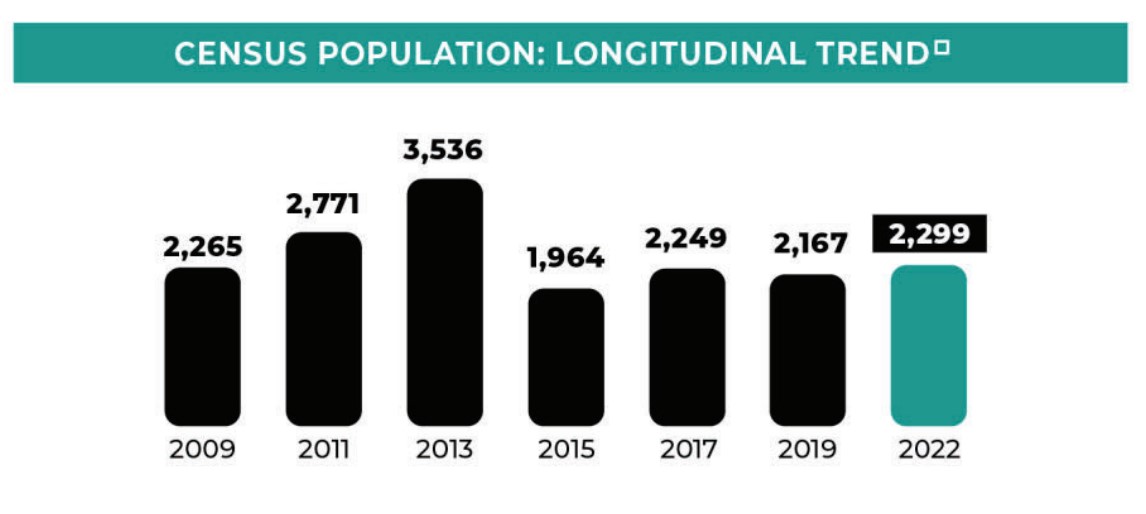
An Applied Survey Research chart shows estimates of unhoused people in Santa Cruz County from point-in-time counts. These “single-day snapshots” typically reflect one-third to one-fifth the households that actually experience homelessness in the course of a year, said Robert Ratner, County of Santa Cruz Housing for Health director. (Applied Survey Research)
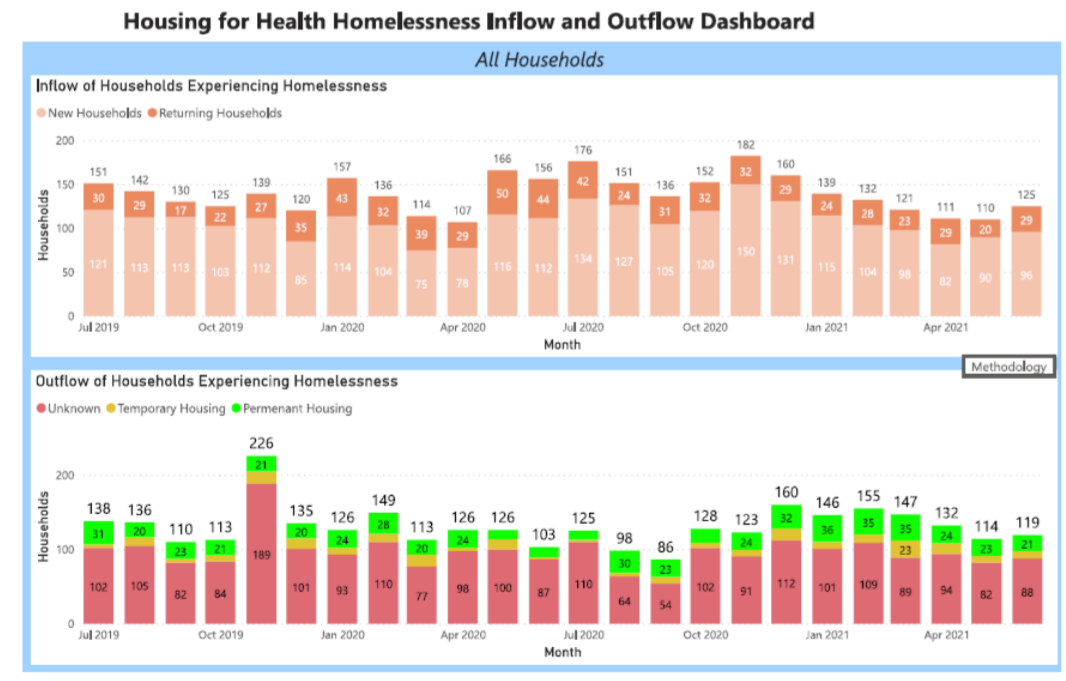
A County of Santa Cruz chart shows estimates of Santa Cruz County households that became homeless and found housing from 2019 to 2021. Estimates are based on data from service providers and only show households that sought assistance. (County of Santa Cruz)

A County of Santa Cruz chart shows homeless households who sought services in Santa Cruz County from July 2019 to June 2021. (County of Santa Cruz screenshot)
Read more in this series
- Part 2: Money sources, constraints and problems with homeless services spending in Santa Cruz County
- Part 3: Effective homeless services spending and a need for housing in Santa Cruz County
- Glossary of homeless services spending categories and money sources
- Editor’s note on how and why this series was made
Read and listen to more Santa Cruz Local reports on homelessness
- Santa Cruz Local’s Solutions to Homelessness series
- Podcast: How Santa Cruz County could solve chronic homelessness — Dec. 17, 2021
- Homelessness survey reveals some common ground in Santa Cruz County — Oct. 8, 2021
- Strides and stalls in Santa Cruz County homeless plan — Feb. 28, 2023
- Podcast: Homeless and formerly homeless residents discuss solutions in Santa Cruz County — Nov. 19, 2021
- Santa Cruz city leaders point to progress on homelessness — Dec. 22, 2022
- Homeless plan gets mixed results in Santa Cruz County — Aug. 9, 2022
- Without rental money, Santa Cruz seniors return to homelessness — June 25, 2022
- Shared data, goals in Santa Cruz County’s plan for homeless — March 10, 2021
Santa Cruz Local intern Brian Phan contributed to this report.
Questions or comments? Email [email protected]. Santa Cruz Local is supported by members, major donors, sponsors and grants for the general support of our newsroom. Our news judgments are made independently and not on the basis of donor support. Learn more about Santa Cruz Local and how we are funded.
Stephen Baxter is a co-founder and editor of Santa Cruz Local. He covers Santa Cruz County government.
Kara Meyberg Guzman is the CEO and co-founder of Santa Cruz Local. Prior to Santa Cruz Local, she served as the Santa Cruz Sentinel’s managing editor. She has a biology degree from Stanford University and lives in Santa Cruz.
Natalya Dreszer is Santa Cruz Local's community engagement and business development coordinator.




